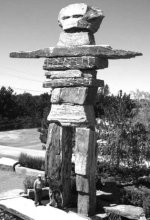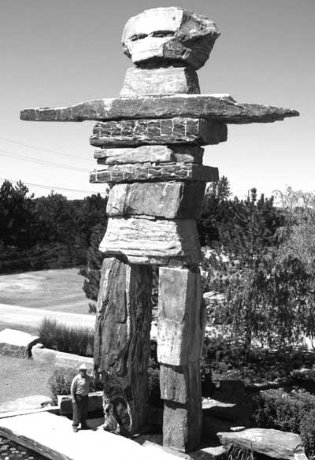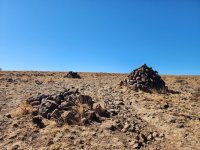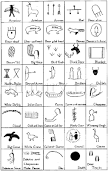Pick whichever term you like.
I confess I have never built one or touched one, but have seen a few. Paddlers see them as well as hikers. The topic is to discuss what seems to be confusion, ambiguity or outright cognitive dissonance about these things. Can you build them, alter them, remove them? It seems that in some places it's actually illegal to damage one, in other places park services are removing them, and in still other places you are strongly discouraged to build any.
Here are a couple of articles that just popped up on my phone:

 www.iflscience.com
www.iflscience.com
:max_bytes(150000):strip_icc()/__opt__aboutcom__coeus__resources__content_migration__treehugger__images__2018__08__inukshuk-363d30943bac4d009e6b23abeb20cc03.jpg)
 www.treehugger.com
www.treehugger.com
I was especially impressed by this reason for not touching a rock in one of the articles: "If you move a rock from one place to the next you may have inadvertently disturbed the home of a tiny critter living beneath it." Oh, sob! And I can't even tell whether this ecological catastrophe is a counsel not to disturb an inukshuk or a counsel not to build one, or both.
Some of these rock piles are near sacred because they're supposed have been navigation aids or spiritual monuments for historical people. Others are considered to be completely contrary to the sacred "leave no trace" philosophy of wilderness travel. Still others are considered works of art, while yet others are deemed ugly vanity flings by selfie-seeking narcissists.
I'm confused. If one is not an anthropologist, ethnologist, geologist or art critic, how is he or she supposed to distinguish the good from bad existing stacks of stones? And whether one can or should build a rock pile as one's own navigational aid, spiritual monument or work of art?
I confess I have never built one or touched one, but have seen a few. Paddlers see them as well as hikers. The topic is to discuss what seems to be confusion, ambiguity or outright cognitive dissonance about these things. Can you build them, alter them, remove them? It seems that in some places it's actually illegal to damage one, in other places park services are removing them, and in still other places you are strongly discouraged to build any.
Here are a couple of articles that just popped up on my phone:

Why You Shouldn’t Stack Rocks On Hikes And What To Do If You See Them
What are rock cairns? Why were they invented and what should you do if you across them when hiking?
:max_bytes(150000):strip_icc()/__opt__aboutcom__coeus__resources__content_migration__treehugger__images__2018__08__inukshuk-363d30943bac4d009e6b23abeb20cc03.jpg)
The World Doesn't Want Your Inukshuk
These little stacks of stones might be fun to build, but their proliferation around the globe is turning into a real problem.
I was especially impressed by this reason for not touching a rock in one of the articles: "If you move a rock from one place to the next you may have inadvertently disturbed the home of a tiny critter living beneath it." Oh, sob! And I can't even tell whether this ecological catastrophe is a counsel not to disturb an inukshuk or a counsel not to build one, or both.
Some of these rock piles are near sacred because they're supposed have been navigation aids or spiritual monuments for historical people. Others are considered to be completely contrary to the sacred "leave no trace" philosophy of wilderness travel. Still others are considered works of art, while yet others are deemed ugly vanity flings by selfie-seeking narcissists.
I'm confused. If one is not an anthropologist, ethnologist, geologist or art critic, how is he or she supposed to distinguish the good from bad existing stacks of stones? And whether one can or should build a rock pile as one's own navigational aid, spiritual monument or work of art?





